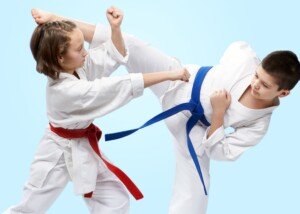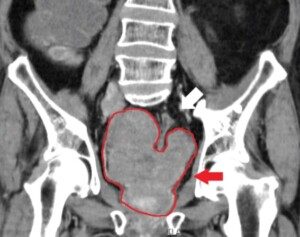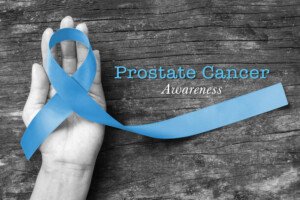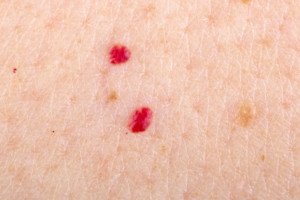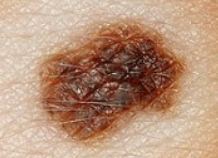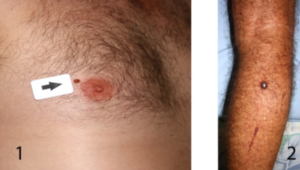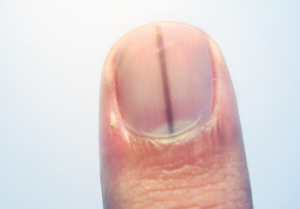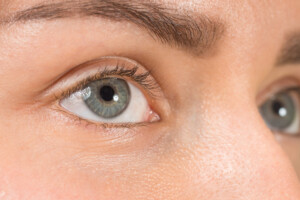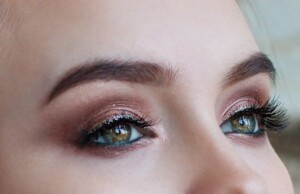Autistic kids can do this animal-based workout in just seven minutes.
But that’s plenty of time to restore their self-regulation as well as encourage them to embrace the values of exercise.
In no particular order, these simple animal-mimicking movements can be completed in about seven minutes.
But if your child on the Autism Spectrum takes longer, that’s perfectly okay!
If your autistic child is reluctant, for whatever reason, to engage in this fun activity, perhaps you can motivate them by using a timer set for 10 minutes and tell them, “Let’s see if you can complete all these animal movements before the timer dings!”
To complete it in seven minutes, this would mean performing the animal motions for 45 seconds, with 15 seconds in between before starting on the next animal.
This is a form of exercise called interval training. Interval training, particularly if intense, has been proven in study after study to be extremely beneficial to cardiovascular health as well as reap other benefits such as a boosted immune system and stronger joints.
Animal Exercises to Help Autistic Kids Self-Regulate
BEAR WALK
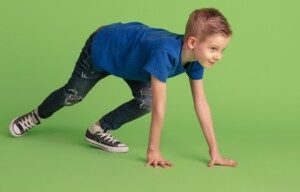
Freepik.com/master1305
With hands and feet on the floor at the same time, walk as fast as possible.
This means the hips will be higher than the shoulders. The bear walk can also be done sideways.
GORILLA SHUFFLE
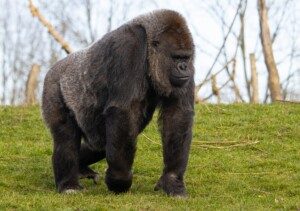
Freepik.com/wirestock
Get into a low Sumo wrestler squat, hands on the floor, and shuffle about.
STARFISH JUMPS
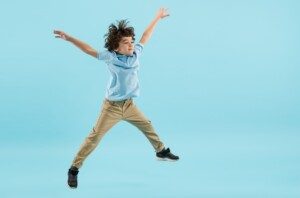
Freepik.com/master1305
These are jumping jacks. They should be done as quickly as possible. The speed will, of course, vary from child to child.
CHEETAH RUN
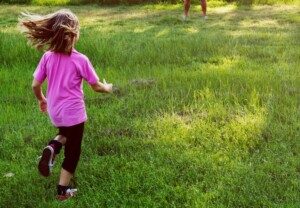
Freepik.com/rawpixel
Run in place as fast as possible if indoors.
Or, if you’re at a park or in a large yard, have your child dash as fast as possible from one end to the other, and repeat until the 45 seconds are up.
KANGAROO HOPS
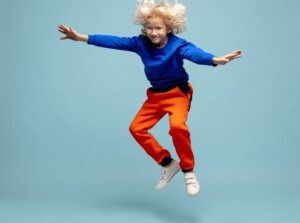
Freepik.com/master1305
With feet shoulder-width to close together, hop around, always using both feet at the same time.
CRAB CRAWL
The child sits on the floor and places their hands palm down near their hips, feet flat on the floor.
They lift their butt up and crawl backward, forward, even side to side.
FROG JUMP
On all fours, hop about like a frog. If your child is unable to do this, see if they can hop around with only their legs while slightly squatted — a squat jump.
Why will this activity session help autistic kids with self-regulation?
Because the human body was meant to move vigorously.
Ask any adult – autistic or neurotypical – who works out hard at a gym after a harried day at the workplace – just how effective their time at the gym was at mellowing and chilling them out.
They’ll give it a five-star rating. It’s a fact: Rigorous physical activity is incredibly effective at returning order to an individual’s restless or dysregulated mind.
Certainly, this doesn’t mean have your kid abandon their other modes of self-regulation such as swinging or curling up in a hanging pod, nestling in a pressure chair, snugging under a heavy blanket or using their favorite stimming device.
You can add this animal-acting routine to your young Autist’s self-regulation arsenal.
Also, rigorous exercise provides more than just self-regulation.
It improves fitness, health, balance, coordination and immune function.
It will heighten their self-confidence and build their self-esteem.
And of course, this animal-mimicking routine will improve your kid’s performance in any sports they may either already be involved in, or future sports they may eventually be doing.
Lastly … come on, grownups, YOU TOO will benefit by doing these exercises alongside your child.
If that’s not possible due to your little Autist’s challenges, that’s okay; do your best to ensure that they will get the most out of this interval training workout!
PS: Make sure they’re wearing a good pair of athletic shoes.
 Lorra Garrick is a former personal trainer certified by the American Council on Exercise. At Bally Total Fitness, where she was also a group fitness instructor, she trained clients of all ages for fat loss and maintaining it, muscle and strength building, fitness, and improved cardiovascular and overall health. She has a clinical diagnosis of ASD.
Lorra Garrick is a former personal trainer certified by the American Council on Exercise. At Bally Total Fitness, where she was also a group fitness instructor, she trained clients of all ages for fat loss and maintaining it, muscle and strength building, fitness, and improved cardiovascular and overall health. She has a clinical diagnosis of ASD.
.




